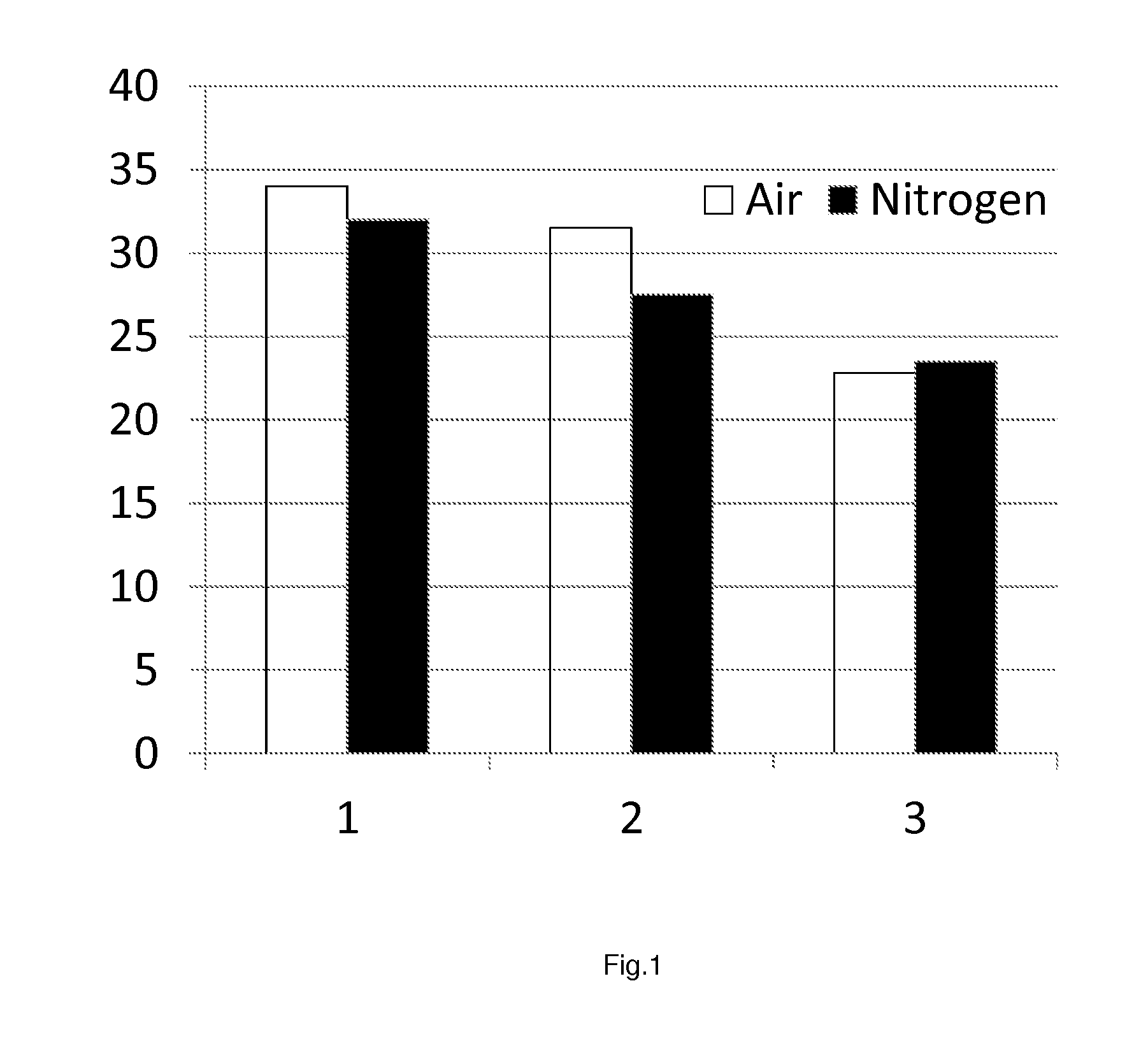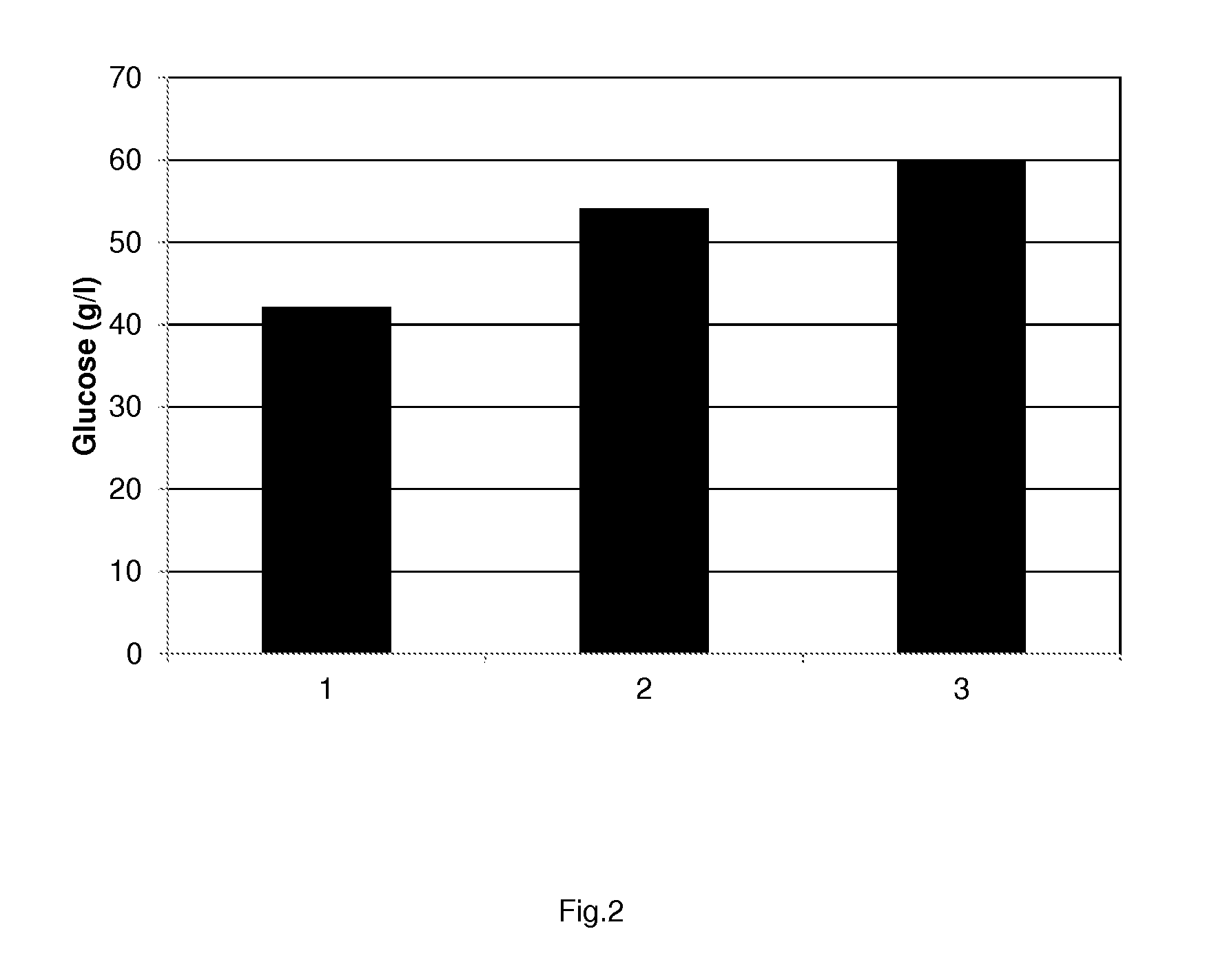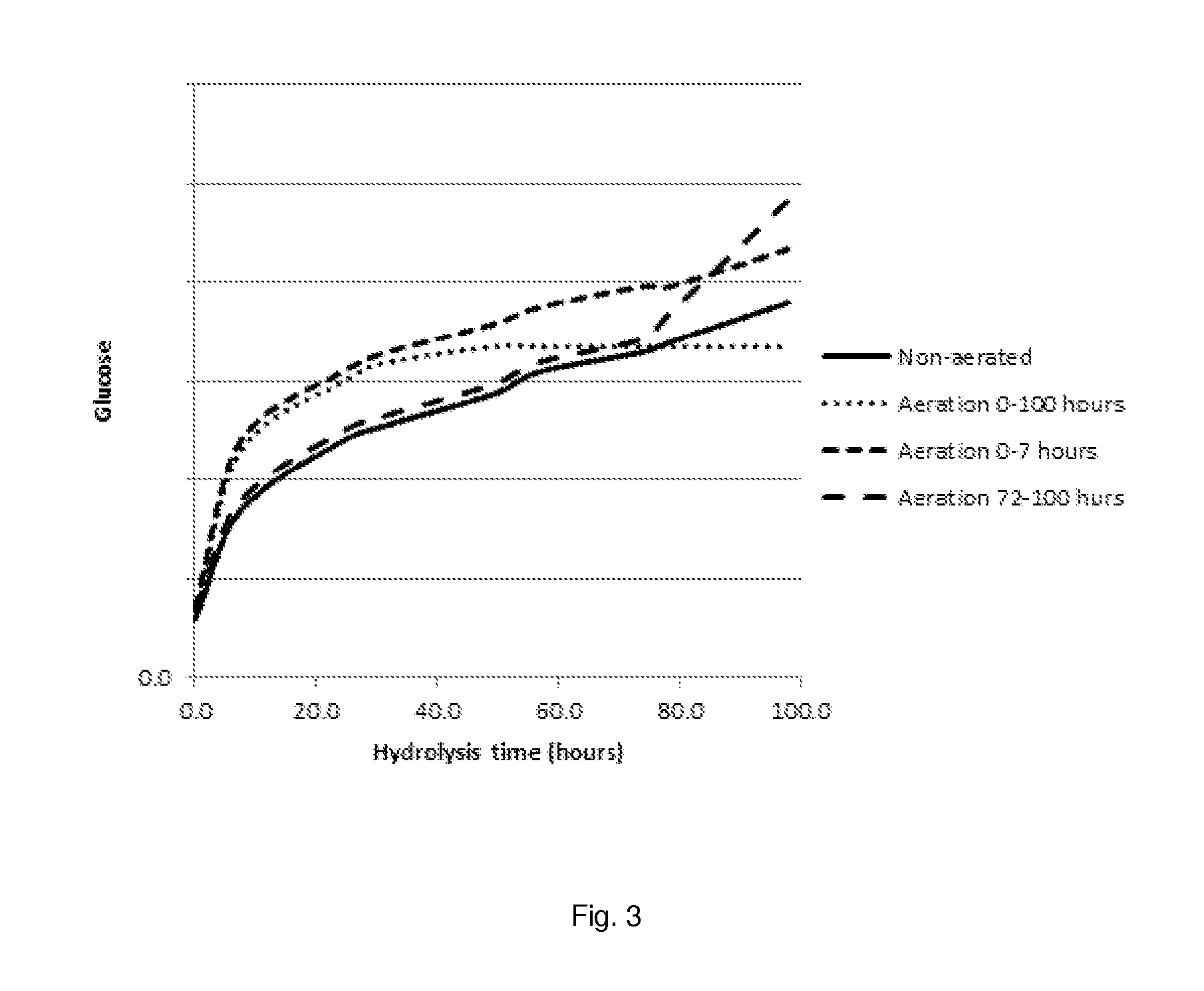Process for enzymatic hydrolysis of lignocellulosic material and fermentation of sugars
a technology of lignocellulosic material and enzymatic hydrolysis, which is applied in the direction of fermentation, waste based fuel, biofuels, etc., can solve the problems of feedstock to ethanol yield and investment, slow and incomplete conversion into reducing sugars, and high cost of enzyme production, so as to reduce the dosage of enzymes and reduce process time , the effect of increasing yield
- Summary
- Abstract
- Description
- Claims
- Application Information
AI Technical Summary
Benefits of technology
Problems solved by technology
Method used
Image
Examples
example 1
Evaluation of the Effect of the Absence of Oxygen During Hydrolysis on the Cellulolytic Activity of Cellulase Enzyme Cocktails
[0228]The effect of oxygen absence during hydrolysis on the cellulolytic activity of three different enzyme cocktails was evaluated according to the procedures described below. The hydrolysis reactions were performed with acid pretreated cornstover (aCS) feedstock at a final concentration of 10 w / w % DM. This feedstock solution was prepared via the dilution of a concentrated feedstock solution with water. Subsequently the pH was adjusted to pH 4.5 with a 4M NaOH solution. The elimination of oxygen from the feedstock was accomplished in two steps. First, the feedstock solution was degassed via sonication under vacuum in a sonication bath (Bransonic 5510E-DTH, setting; Degas) for 15 minutes. In the second step, the oxygen was further removed by continuous sparging of a nitrogen flow through a 500 ml solution of the 10% DM feedstock for a period of 3 hours. Prio...
example 2
The Effect of Oxygen on the Cellulolytic Activity of Cellulase Enzyme Cocktails During Hydrolysis of Lignocellulosic Feedstock
[0234]The effect of oxygen on the cellulolytic activity of the enzyme cocktail during the hydrolysis of lignocellulosic feedstock is shown in this exaple. The hydrolysis reactions are performed with acid pretreated cornstover (aCS) feedstock at a final concentration of 20 w / w % DM. This feedstock solution is prepared via the dilution of a concentrated feedstock solution with water. Subsequently the pH is adjusted to pH 4.5 with a 10% (w / w) NH4OH solution.
[0235]The hydrolysis is done in a stirred, pH controlled and temperature controlled reactor with a working volume of 1 I. Each hydrolysis is performed in duplicate with 2.5 mg / g DM TEC-210 cellulase enzyme cocktail. TEC-210 was produced according to the inoculation and fermentation procedures described in WO2011 / 000949.
[0236]The following experiments are done:[0237]1. 1 l of 20% aCS, pH 4.5, temperature 62° C...
example 3
The Effect of Partial Aeration (in Time) on the Enzymatic Hydrolysis of Lignocellulosic Feedstock on Pilot Scale
[0243]The effect of the dissolved oxygen concentration on the cellulolytic activity of the enzyme cocktail or composition during the hydrolysis of lignocellulosic feedstock on pilot scale is shown in this example. The hydrolysis reactions are performed with acid pretreated cornstover (aCS) feedstock at a final concentration of 20 w / w % DM. The feedstock solution is prepared by the dilution of concentrated feedstock slurry with water. The pH is adjusted to pH 4.5 with a 25% (w / w) NH4OH solution.
[0244]The enzymatic hydrolysis is done in a 270 liter pilot reactor which is pH and temperature controlled with a working volume of 150 liter. The dissolved oxygen during the process is controlled by adjusting impeller speed at a given airflow and overpressure. The enzymatic hydrolysis is performed at a dosage of 2.5 mg (TCA protein) / g dm TEC-210 cellulase enzyme cocktail. TEC-210 wa...
PUM
| Property | Measurement | Unit |
|---|---|---|
| volume | aaaaa | aaaaa |
| time | aaaaa | aaaaa |
| temperature | aaaaa | aaaaa |
Abstract
Description
Claims
Application Information
 Login to View More
Login to View More - R&D
- Intellectual Property
- Life Sciences
- Materials
- Tech Scout
- Unparalleled Data Quality
- Higher Quality Content
- 60% Fewer Hallucinations
Browse by: Latest US Patents, China's latest patents, Technical Efficacy Thesaurus, Application Domain, Technology Topic, Popular Technical Reports.
© 2025 PatSnap. All rights reserved.Legal|Privacy policy|Modern Slavery Act Transparency Statement|Sitemap|About US| Contact US: help@patsnap.com



